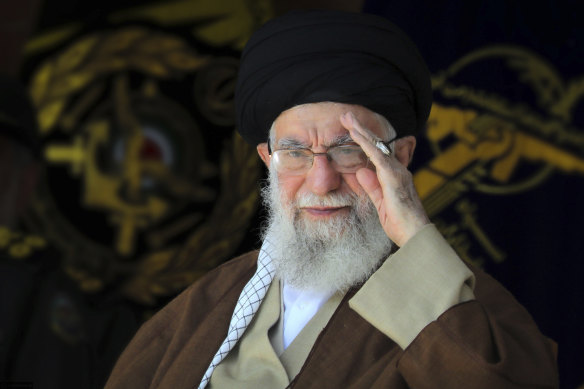
The first time Iran directly attacked Israel, back in April, it was almost as though the ayatollahs didn’t actually want to cause any damage. Highly choreographed and telegraphed in advance, a slow-moving cluster of attack drones floated over a host of neighbouring countries before entering Israeli airspace, where they were shot down, along with cruise and ballistic missiles, by a coalition of Western and Arab nations. Nobody died, and only one person was injured.
On Tuesday, however, Tehran made the highly risky decision to escalate, launching 200 ballistic and hypersonic missiles at Israel with little warning. Israeli air defences had to scramble to respond. With American, British and Jordanian support, they were successful in shooting down most of the rockets, but this time some made it through. Damage was reported to a school, a restaurant and Israeli military bases, along with uninhabited sites in the southern Negev desert. With tragic irony, the only person to die was a Palestinian originally from Gaza, who had been working in the occupied West Bank.

Iran’s Supreme Leader, Ayatollah Ali Khamenei.Credit: AP
The April strike was intended to re-establish deterrence in the wake of Israel’s bombing of an annex of the Iranian embassy in Damascus, which killed a senior Islamic Revolutionary Guard Corps general. Tehran was also sending a signal to its supporters in the Arab world – particularly its proxy armies in Lebanon, Iraq, Syria and Yemen, which were also attacking Israel in solidarity with Hamas in Gaza. However, in coming out of the shadows and revealing itself as the central fulcrum of its much-vaunted “Axis of Resistance” this week, the Islamic Republic made a critical blunder and further deepened its strategic miscalculation.
Somewhat embarrassingly for the regime in Iran, this latest round of missile strikes failed to deliver a decisive blow to Israeli military installations or other infrastructure, and did not cause any Israeli civilian or military loss of life.
Rather than re-establishing deterrence, Iran’s Supreme Leader Ayatollah Ali Khamenei and his IRGC lackies have invited Israeli, and possibly American, retaliatory attacks on sovereign Iranian territory, and risk getting drawn into a regional war in the process.
Loading
In April, Israel responded to the Iranian attack with a precision strike on a missile defence battery in Isfahan which was tasked with protecting sensitive Iranian nuclear sites. The message then was that Israel has both the intelligence and the capability to strike Iran’s nuclear program if it so wishes. The recent wave of high-level assassinations, pager attacks and incursions into southern Lebanon only further demonstrate Israel’s tolerance for risk has increased dramatically in the six months since.
In doing away with war-by-proxy and taking the fight to Israel directly, the Islamic Republic also invites greater international scrutiny and sanctions on itself. Rather than directing attention towards the activities of the assorted terrorist groups under Iranian patronage, which affords Tehran a measure of plausible deniability, it is possible the international community will ultimately conclude it has no choice but to tackle the Islamic Republic’s efforts to destabilise the region.
Khamenei reportedly allowed the “reformist” Masoud Pezeshkian to stand in the recent presidential elections as a means of re-establishing engagement with the West on the nuclear issue and economic sanctions. Just last week, Pezeshkian was in New York, where he told NBC that Iran doesn’t “want war” and aims to avoid being “the cause of instability in the region”, angering hardliners inside Iran with his focus on de-escalation, and his reference to Israel by name rather than the customary “Zionist regime”.



























